(A version of this article was shared with Laughing Place and published on August 4, 2024.)
America is filled with amusement parks – dirty places filled with blinking lights and clunky rides of questionable safety. But Walt Disney redefined the concept of an amusement park, creating what is widely recognized as the first theme park. Instead of the seedy experiences of traveling carnivals, guests of Disneyland experienced warmth, imagination, and the ability for parents, children, and just about anybody else to experience magic together.
Part of Disneyland’s magic – and the magic of all Disney Parks to come since – is just being a place of charm and wonder, where guests can stroll around doing fun things in a clean, safe, and welcoming environment. The other part of the magic lies in the stories being told in countless attractions around the world. In order for Disney Parks attractions to be memorable to guests, they have to tell a good story while adding compelling supporting details. The very best attractions are able to gracefully tell a story while enhancing it with technology (but not letting the technology be the story).
Over the years, Disney’s Imagineers have pioneered the road for combining storytelling with imaginative engineering. In celebration of generations of talented Disney Imagineers, let’s explore some of the most effective Imagineering tricks in Disney attractions.
Traveling Outside the Berm
The Disneyland berm is the stuff of legend. The earthen berm was Walt’s way of isolating the magic of Disneyland from the world outside the park, and it doubled as a foundation for train tracks offering guests a “Grand Circle Tour” around the park on the Disneyland Railroad. The berm worked effectively during the initial years of Disneyland’s operation, but as the park added new attractions, it outgrew the space within the confines of the berm. In other words, Disneyland was out of room. As they say, “necessity breeds invention.” Disney’s Imagineers found ways to place new attractions outside the berm, while preserving the magic using entrances inside the berm. Several favorite Disneyland attractions successfully maintain residency just outside the berm.
Pirates of the Caribbean boards guests inside the “bayou” building within New Orleans Square, and a series of two flume dips takes guests beneath the berm to the primary show building located outside the park.
A similar trick holds true for Haunted Mansion, also located in New Orleans Square. When guests enter the famous “stretching room,” they walk out of the room having dropped down to basement level, where they board their Doom Buggies and travel beneath the berm to the mansion’s show building.
Guests looking to explore the Indiana Jones Adventure: Temple of the Forbidden Eye enter the queue and travel alongside the Jungle Cruise until a short tunnel takes them under the berm and into the temple itself.
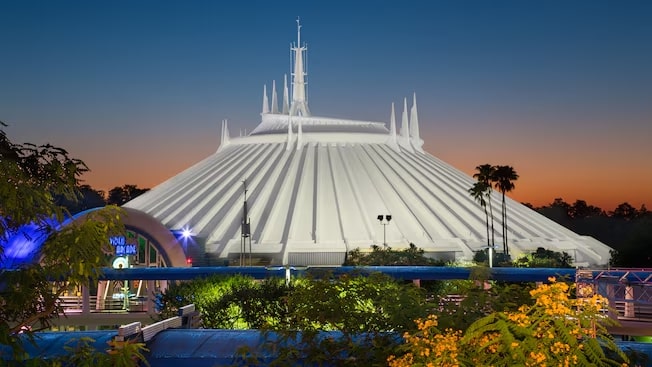
Over in Magic Kingdom, guests entering Space Mountain may notice they wander through a darkened tunnel which ramps gently down and back up again. The Walt Disney World Railroad separates Space Mountain from the rest of Tomorrowland!
Pepper’s Ghost – Haunted Mansion’s Translucent Residents
The Haunted Mansion’s ballroom scene is among the most famous of all Disney Parks attractions. The waltzing ghosts breeze with ease, suggesting the use of sophisticated technology (or the work of the supernatural).
But Disney Legend Yale Gracey actually used one of the oldest special effects in the book – the appropriately named “Pepper’s Ghost” – in animating the dancing spirits. This effect – developed in the 1800s by John Henry Pepper – uses an illusion involving two separate stages, variable lighting, and an invisible and precisely angled piece of glass.
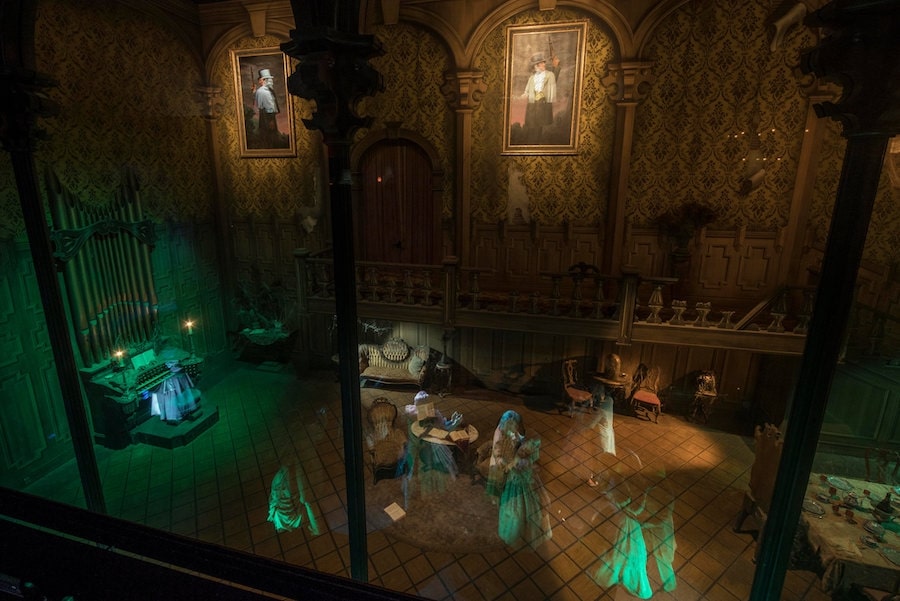
The trick is based on illuminating physical objects and letting them be reflected onto glass, giving them a ghostly appearance to unsuspecting guests. Gracey first encountered this surprisingly simple illusion in a 1913 issue of one of his favorite magazines The Boy Mechanic, and Haunted Mansion guests have been reaping the benefits ever since.
“Projectimation” – Haunted Mansion’s Singing Spirits
Staying in the Haunted Mansion, let’s pay a visit to Madame Leota, residing stately in the mansion’s séance room. Leota’s disembodied head, floating in a crystal ball, was also developed by Yale Gracey, using a process he referred to as “Projectimation.”
This effect was discovered by Gracey while experimenting to make a “Magic Mirror” effect for a 1956 episode of Walt Disney’s Disneyland television show titled Our Unsung Villains. For the show, Gracey was able to project a video image of actor Hans Conried’s talking head onto a bust of Beethoven (Conreid voiced Peter Pan’s iconic nemesis Captain Hook). Gracey’s trick gave the appearance that the bust came to life and began talking.

The success of this effect encouraged Gracey to develop the technology even further, allowing him to immortalize Disney Legend Leota Toombs as Madame Leota. Gracey also brought the singing busts to life in the mansion’s graveyard scene (you may recognize the voice of Disney Legend Thurl Ravenscroft singing “Grim Grinning Ghosts”).
In recent years, Disney Imagineers have introduced an alternate version of Projectimation, where images are projected from inside the face of an animatronic figure to animate facial features. This technique – used in EPCOT’s Frozen Ever After and Magic Kingdom’s Seven Dwarfs Mine Train – has been met with disappointed reactions, and seems to have caused Imagineers to return to straight-up Audio Animatronics, as recently debuted in Tiana’s Bayou Adventure.
The Erector Set – Soarin’s Ride System
Soarin’ first entered the Disney Parks in 2001, in Disney California Adventure. When designing this fan favorite attraction, Imagineers wanted three levels of seating to match up with the 80-foot-tall OMNIMAX screen. The ride design originally included three loading platforms – one for each row of seating – and ride vehicles that traveled along a system of conveyor belts. Unfortunately, the design was too costly, and as a result the attraction was facing termination.
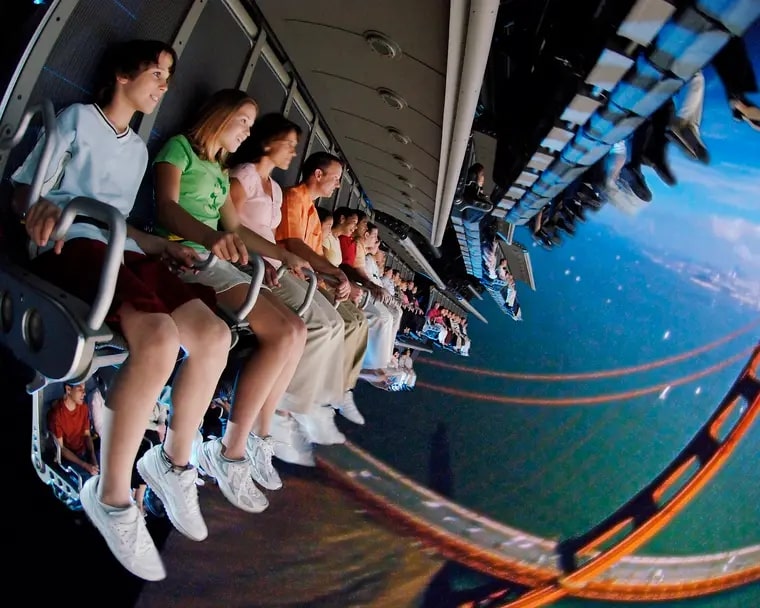
But Imagineer Mark Sumner was inspired. One fateful weekend, Sumner dug out a 40-year-old Erector set from the attic of his home. Over the course of a few hours, he constructed a small working model for a new design in which all attraction guests could load on one level, then “take off” for their flight over California using his ingenious mechanical system. The following Monday, Sumner brought his Erector set creation to work in Imagineering, demonstrated his idea, and soon received the green light to continue this new attraction-saving design.
For over twenty years, guests from across the globe have been Soarin’ over California, and around the world. “Nice work, pal!”
Living and Breathing – The Banshees of Avatar Flight of Passage
When Disney’s Animal Kingdom opened the land of Pandora in 2017, it pushed the envelope on immersive themed lands. The nighttime bioluminescence of the land instantly made Pandora a favorite location for photographers.
Within Pandora, the attraction Avatar Flight of Passage upped the ante for unique ride experiences. In developing the attraction, Imagineers took the already successful concept of Soarin’s flight motion simulator, and “plussed” it with the experience of mounting and flying a living, breathing banshee dragon.
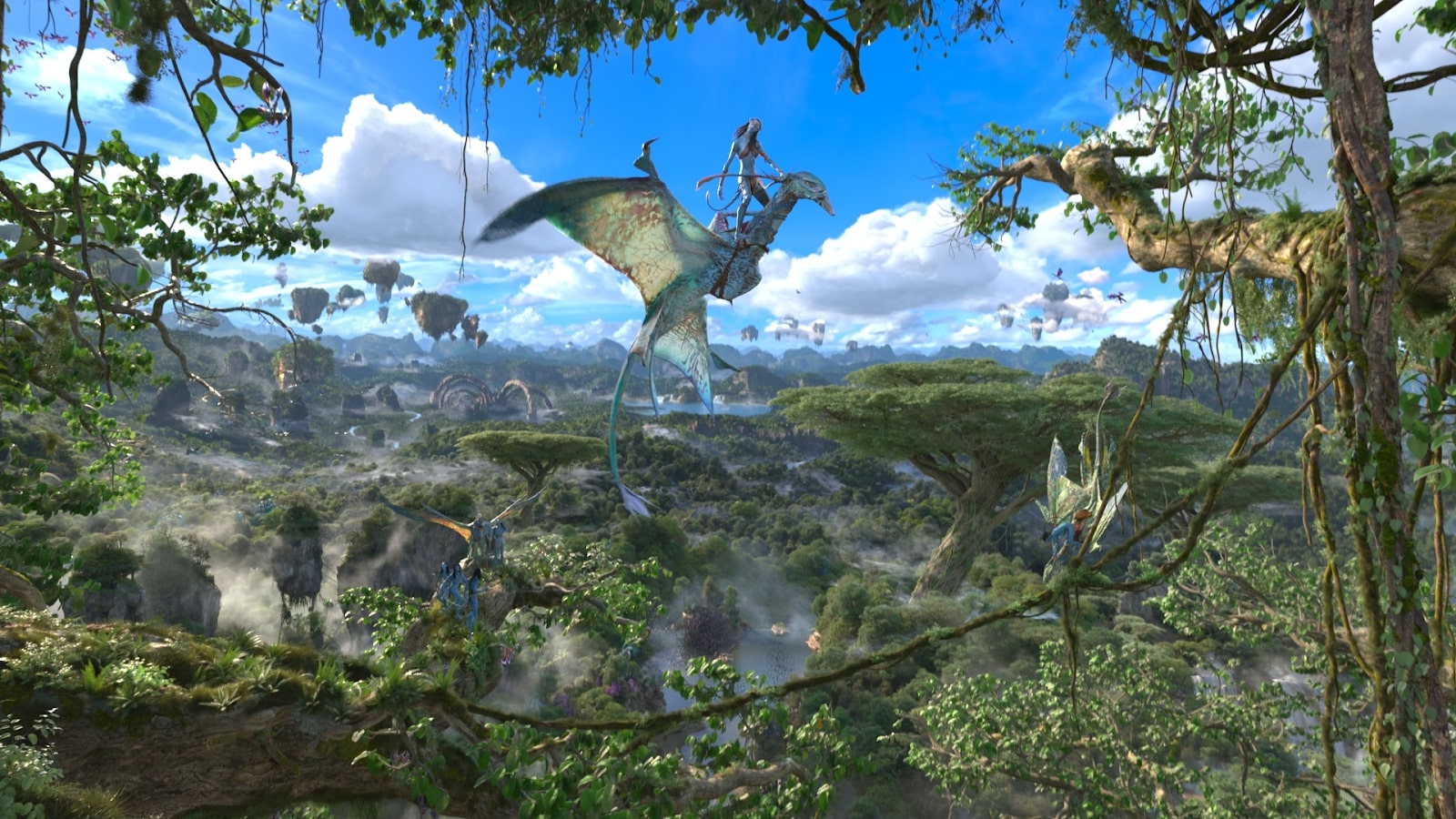
Textures and elements were added to the ride vehicles to make guests feel like they were riding a live dragon. Perhaps the most artistically impressive aspect of the banshee design is the addition of billowing “lungs” within the body of the banshee, which can be felt by the rider’s legs while in flight. The realistic feel of the banshees more than offsets the less realistic animation in the film, making Flight of Passage an overall breathtaking experience.
The Rolling Boulder – Indiana Jones Adventure
Fans of Indiana Jones can relive the most visually iconic moment in the film franchise for themselves in Indiana Jones Adventure: Temple of the Forbidden Eye. The most exciting moment in the attraction comes when the guests’ transport vehicle gets chased by that iconic rolling boulder. Or does it?

The Imagineers of this fan favorite attraction are literally playing tricks on your eyes. The ominous (and perfectly round) boulder in the attraction is not actually chasing guests. In reality, the boulder is not even rolling at all. It is maintained in a stationary location, simply spinning in place. Likewise, the vehicle you are fleeing in is not actually driving away – it stays in place as well (though it may jostle around a bit).
The tunnel wall from which the boulder rolls actually recedes from guests, giving the appearance that guest vehicles are fleeing in retreat. The boulder – while it isn’t rolling – is slowly lowered while spinning, giving the appearance that it is rolling downhill and right toward you!
Double Gravity – The Twilight Zone Tower of Terror and Guardians of the Galaxy – Mission: Breakout
When Disney Imagineers were designing the Twilight Zone Tower of Terror for Disney’s Hollywood Studios, they wanted to include a drop that would thrill guests. In order to help create the most delightfully frightful supernatural elevator, Imagineers called upon a company experienced in making actual elevators – The Otis Elevator Company.
Otis created the vertical elevator ride system to include a period of freefall. It was nice, but not as exciting as Imagineers wanted to provide. Natural gravity just didn’t pack the punch they were looking for. So Otis went back to work, and created a system that didn’t just drop the elevator – it pulled the elevator down.
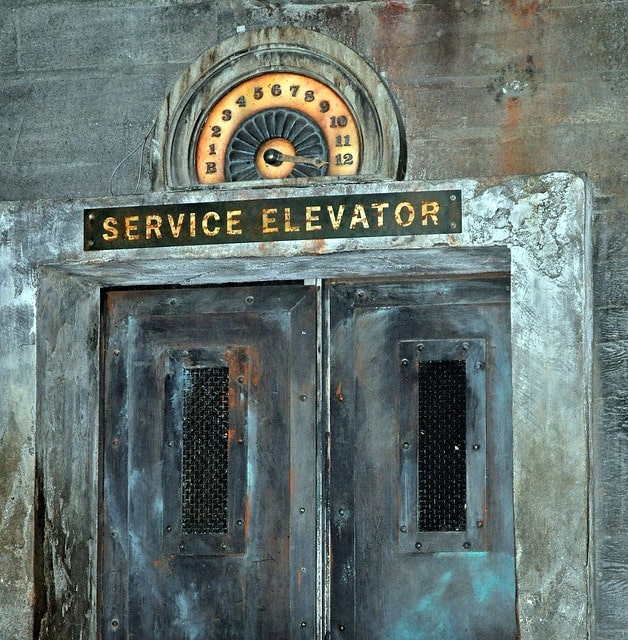
Now, when the elevator gets “struck”, guests immediately feel the sensation of falling. With a top drop speed approaching forty miles per hour, guests actually fall faster than gravity. When a Cast Member asks you to make sure all loose items are stowed in the pouch beneath your seat, I highly recommend heeding their advice. I once left a sweatshirt sitting on my lap, and found it floating in front of my face while our elevator was in free fall. That’s the difference between natural gravity and this thrilling attraction!
Speaking of that drop – there’s a good chance that you can ride the Tower of Terror (or Guardians of the Galaxy – Mission: Breakout in Disney California Adventure) during multiple visits and not have the same experience both times. That’s because the attractions now use a randomized sequence that makes each experience unique. You never know how many times you’ll drop…or how far.
Things That Go Bump in the Night – It’s Tough to be a Bug
It’s Tough to be a Bug has existed for as long as Disney’s Animal Kingdom’s Tree of Life itself, being located literally beneath the roots of the tree. After winding through the subterrestrial-feeling queue, guests find their way to their seats, already predisposed to the feeling of being surrounded by creepy, crawly bugs. The 428-seat theater is dimly lit, adding a sense of unease to the experience.
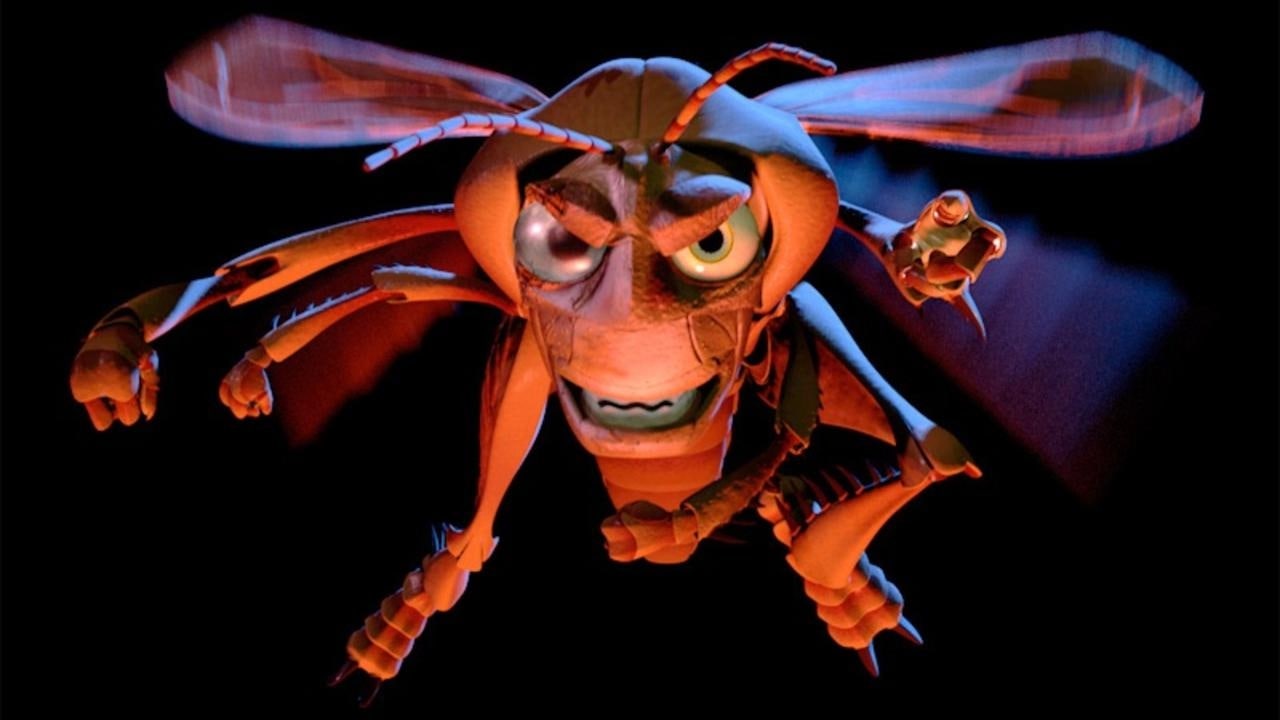
For most of the show, guests watch Flik, Hopper, and the other bugs from a safe distance. But repeat guests know it’s coming – Hopper declares war, the theater goes dark, and “hornets” pop out from the seats themselves, “stinging” everyone in the room. Yikes! Of course, the hornets aren’t real, but try telling that to a four-year-old child who was just spooked out of their seat! The hornets are actually hidden back pokers. Be careful once the show is complete – you may feel a spider climbing on your leg! Rest assured, those are hidden air jets simulating the sensation.
Stitch’s Great Escape and ExtraTERRORestrial Alien Encounter – two extinct attractions formerly residing in Magic Kingdom’s Tomorrowland – also gave guests the creeps. Or should we say, a downright frightful experience, with aliens poking at fully restrained guests. It’s no surprise that these extinct attractions no longer terrorize guests.
Pro Tip: It’s Tough to be a Bug has long been a staple in Animal Kingdom, but if you don’t catch it again soon, you may never catch it again. The attraction is scheduled to be retired sometime later in 2024 or 2025.
Duplicity – Mission: SPACE and Millennium Falcon: Smugglers Run
Mission: SPACE may be the most “hidden” Disney thrill ride. This four-minute trip to space takes guests in their own small capsule on a trip around the earth (or all the way to Mars, for those with hardy stomachs). Centrifugal force spins guests into orbit at speeds as fast as 35 mph. However, this ride doesn’t register in most guests’ minds as a fast ride. That’s because speed is a hidden component used to tell the story of space travel, taking guests sneakily sideways – not forward – creating a sense of inertial force.
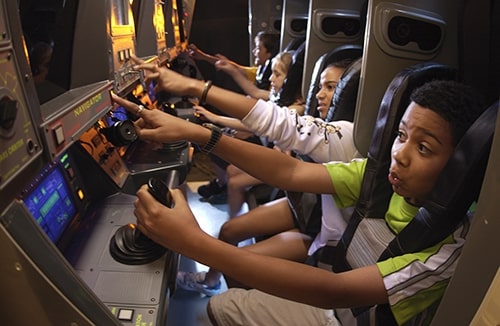
While that hidden sensation is a pretty cool concept, the real engineering marvel lies in the high capacity of the ride. Mission: SPACE comprises four separate centrifuges, each with ten capsules holding up to four riders apiece. Do the math, and you’ll realize up to 160 riders can experience the trip at one time. And you thought you were alone in space!
Millennium Falcon: Smugglers Run in Disney’s Hollywood Studios plays a similar trick on guests. Upon nearing the end of the attraction’s queue line, guests split into two hallways – each offering its own replica of the Falcon’s legendary lounge. After a quick photo op, guests then split again, into two more hallways, each of which appears to lead to the Falcon’s “one and only” famous cockpit. Once you enter the cockpit itself, you may be surprised to know you’re one of seven cockpits at the end of the hallway, as the cockpit motion simulators rotate on a carousel during the show. Doing the math, you’ve got two hallways, each of which splits into two more hallways, each of which contains seven cockpits, for a total of 28 cockpits. With a maximum cockpit capacity of six guests apiece, that means up to 168 guests can pilot the Millennium Falcon at any given time!
Omnimoving – Disney’s Famous Dark Ride System
When enjoying dark rides in Disney Parks, we might take it for granted when our ride vehicle turns in a specific direction to face a scene in the attraction. We can thank the Omnimover for sparing us from straining our necks. Disney Legend Bob Gurr coined the term, as a portmanteau of OmniRange and PeopleMover. Disney contemporaries Roger Broggie and Bert Brundage developed the mechanics for the Omnimover, building on Gurr’s well-established system of slow-moving vehicles.

Many epic Disney attractions use the Omnimover, but a few of the best include Haunted Mansion, Spaceship Earth, Buzz Lightyear Astro Blasters, and The Little Mermaid: Ariel’s Undersea Adventure.
The concept of the Omnimover was taken to new heights with the 2022 opening of Guardians of the Galaxy: Cosmic Rewind in EPCOT. This indoor roller coaster is literally a party-on-wheels, rockin’ out while saving the galaxy. But the Imagineering beauty of this coaster is the way the coaster cars turn while speeding along the rail, giving daring guests a straight-on look at the villainous Celestial named Eson.
—
What is your favorite Imagineering trick in a Disney Parks attraction? Did it make this list, or did I miss your favorite?
If you are fascinated by the Imagineering tricks in Disney Parks attractions, you’ll find much more of that magic in my series The Illusion of Fantasy: The Science and Psychology Behind the Magic That Puts Us In the Story. Enjoy!
Follow Facts and Figment and join the conversation on social: Instagram Facebook X




